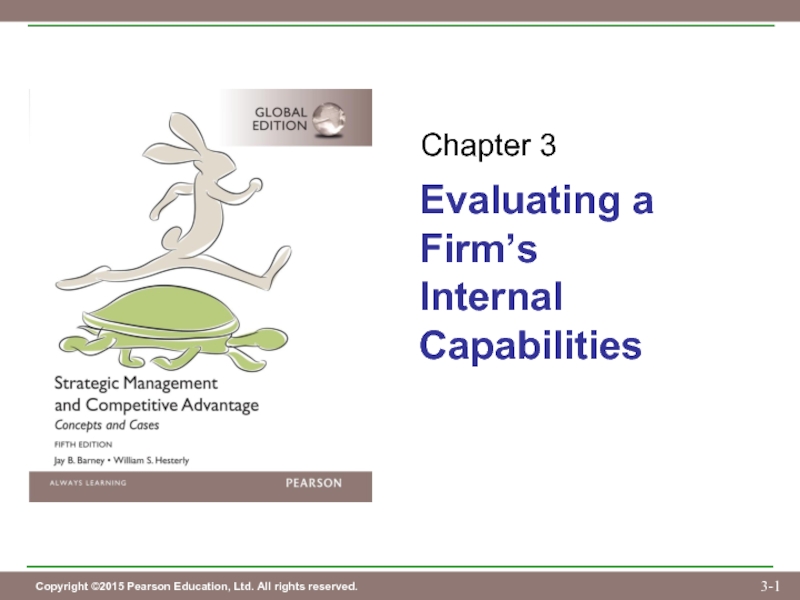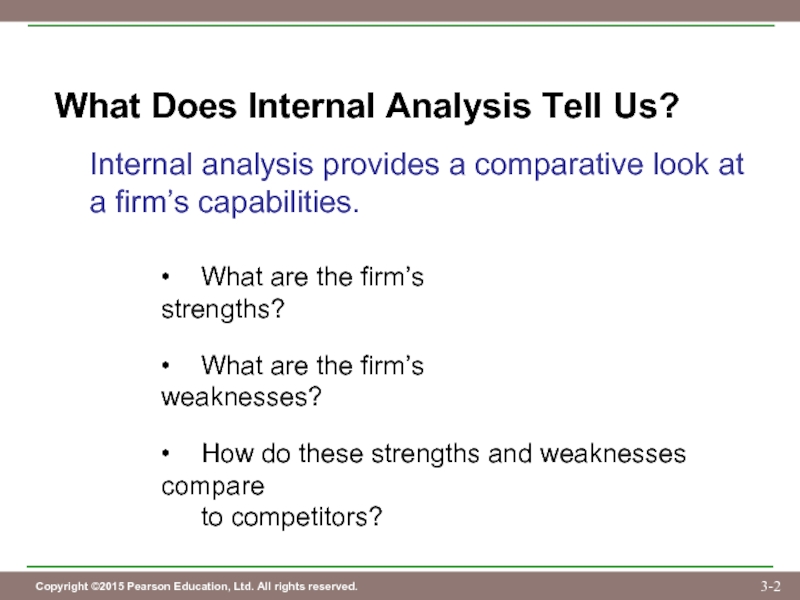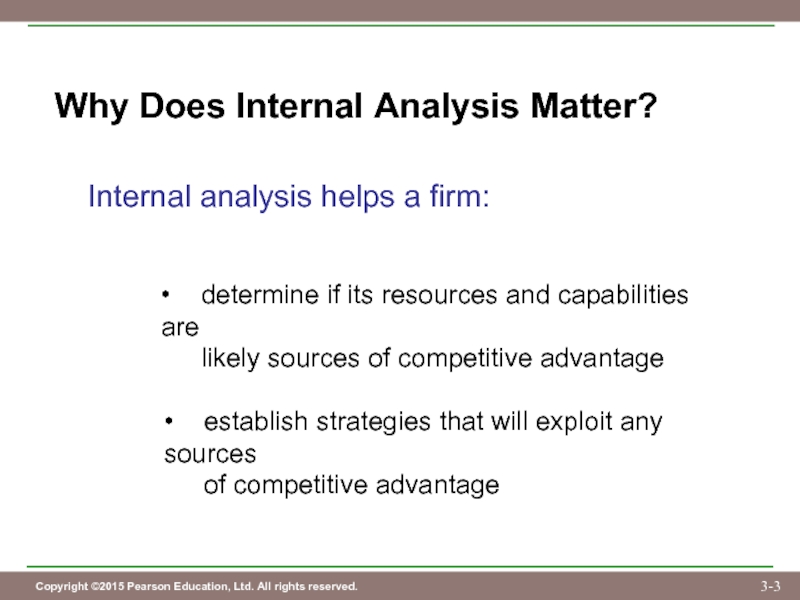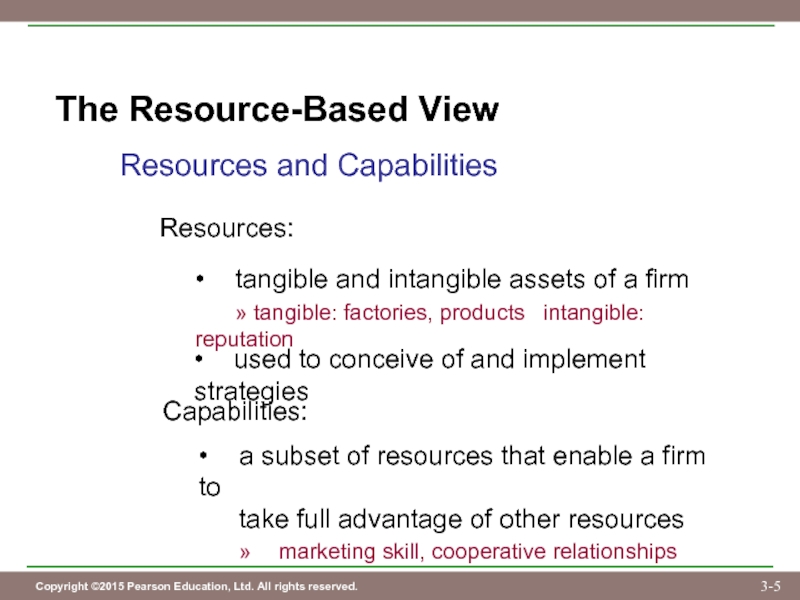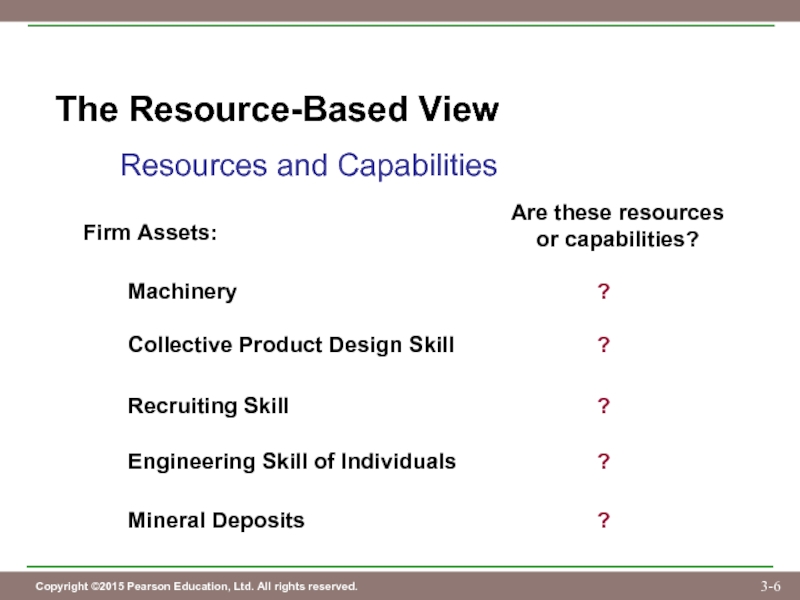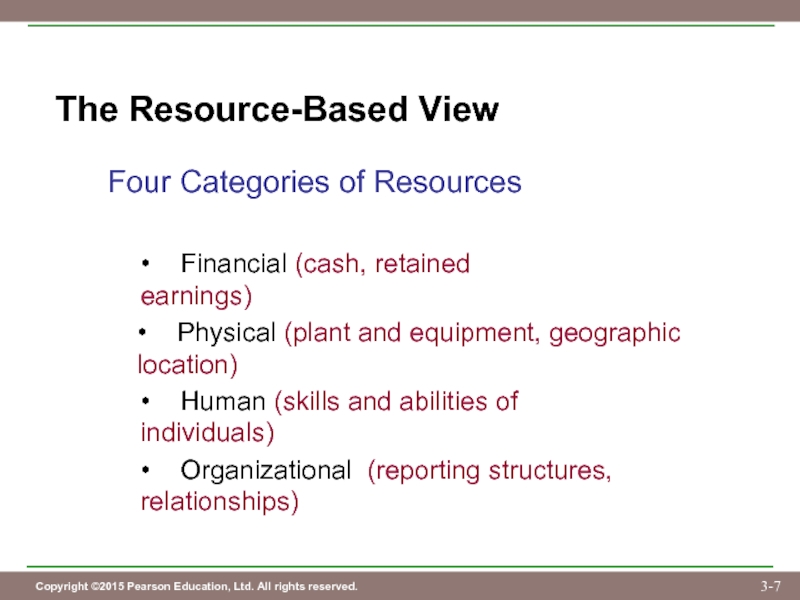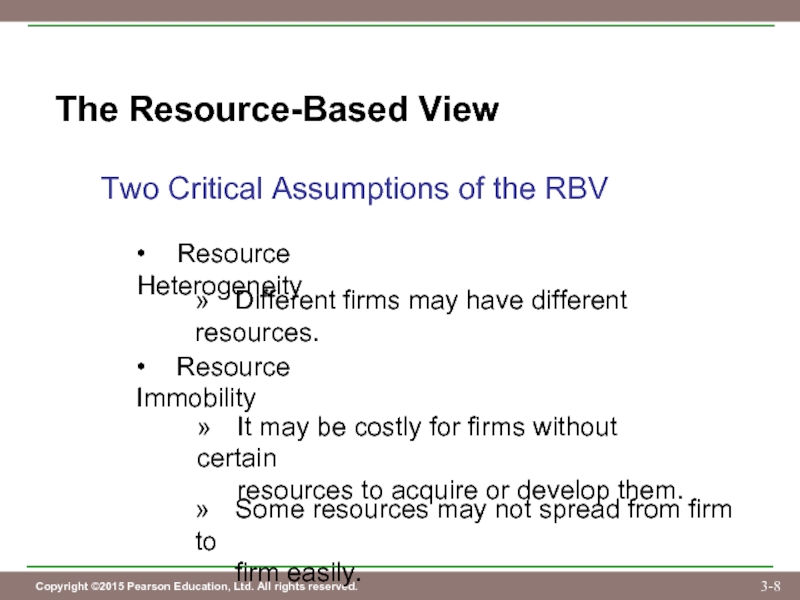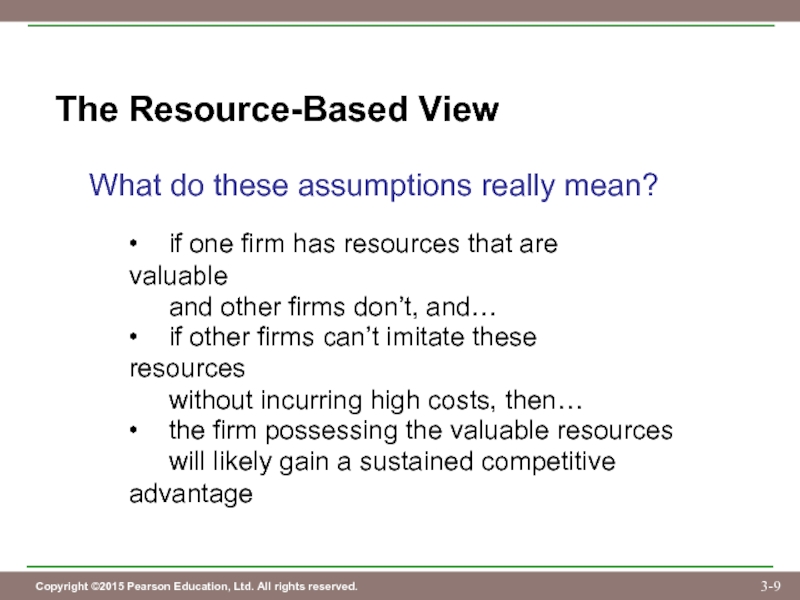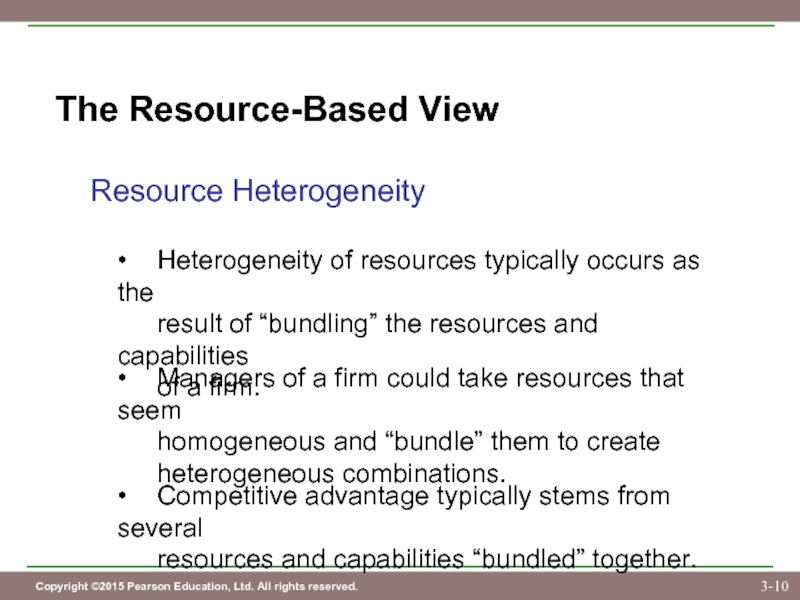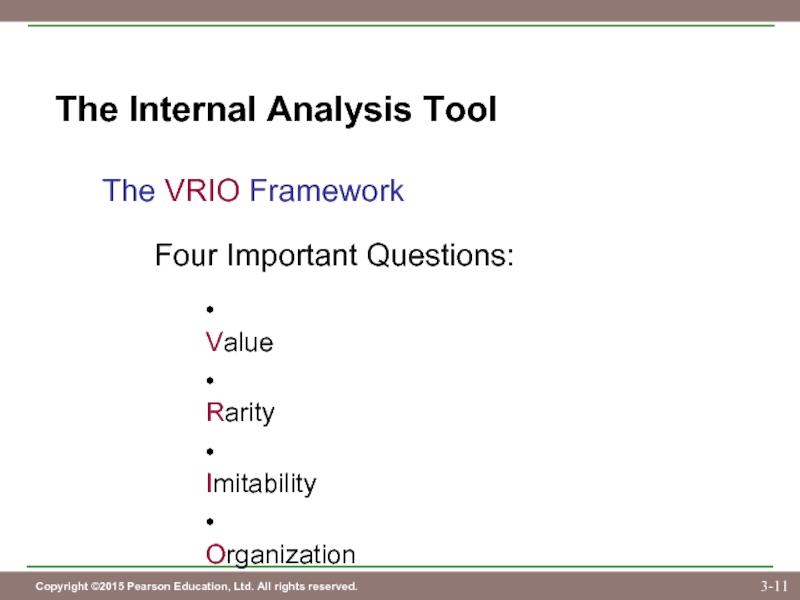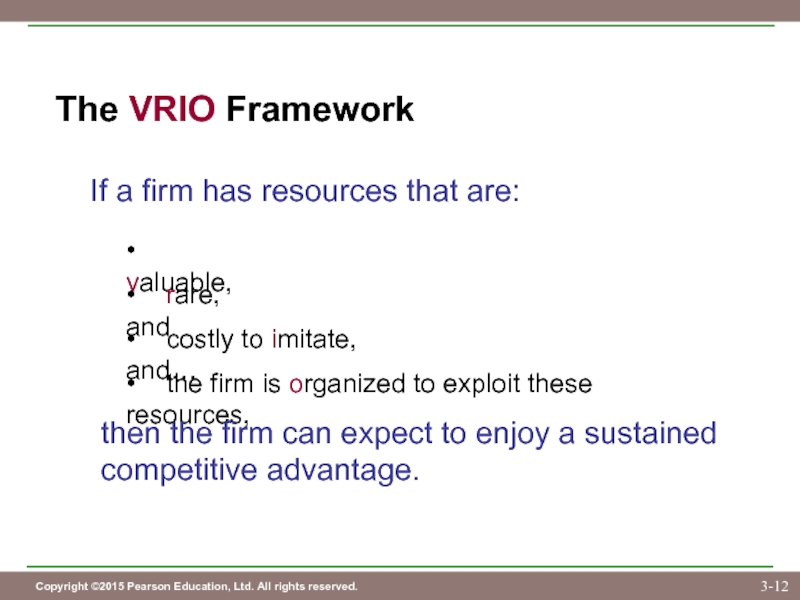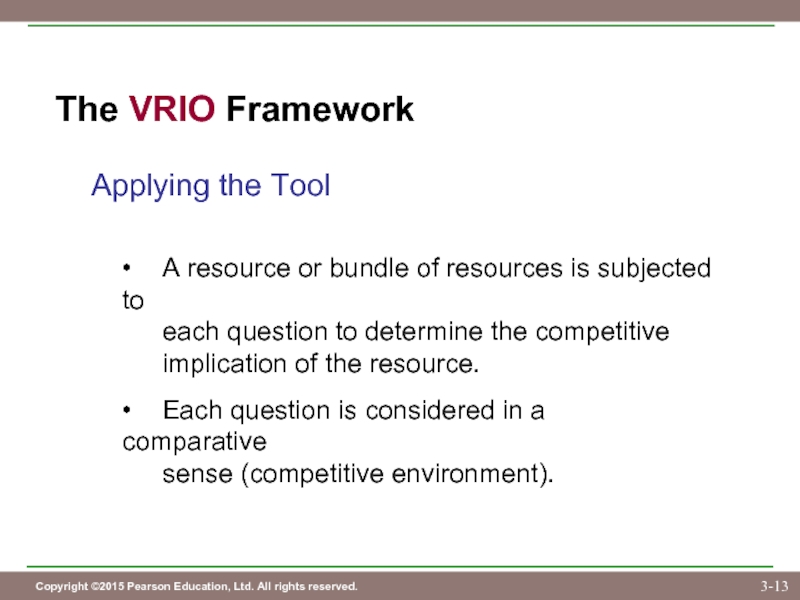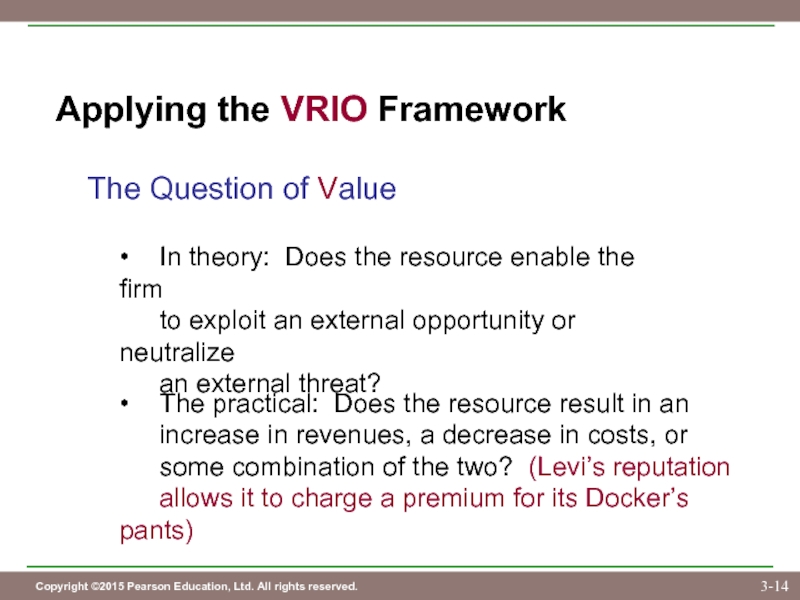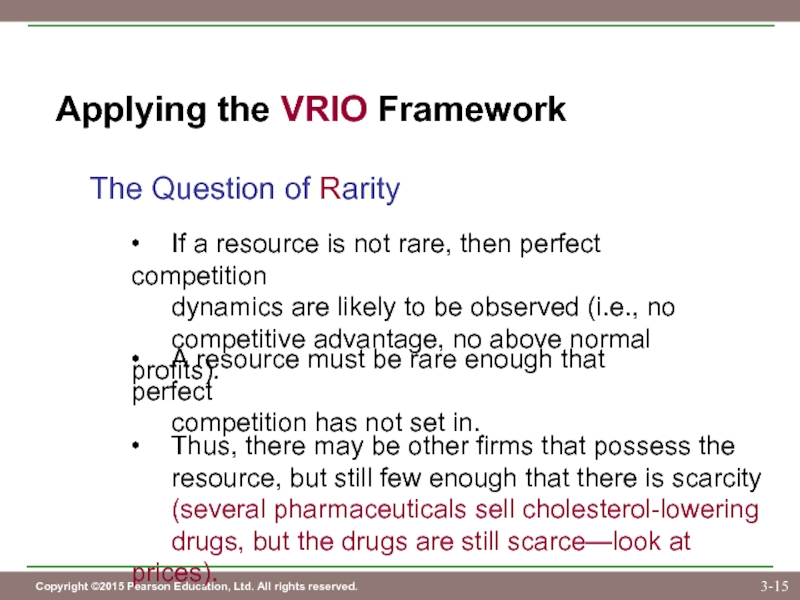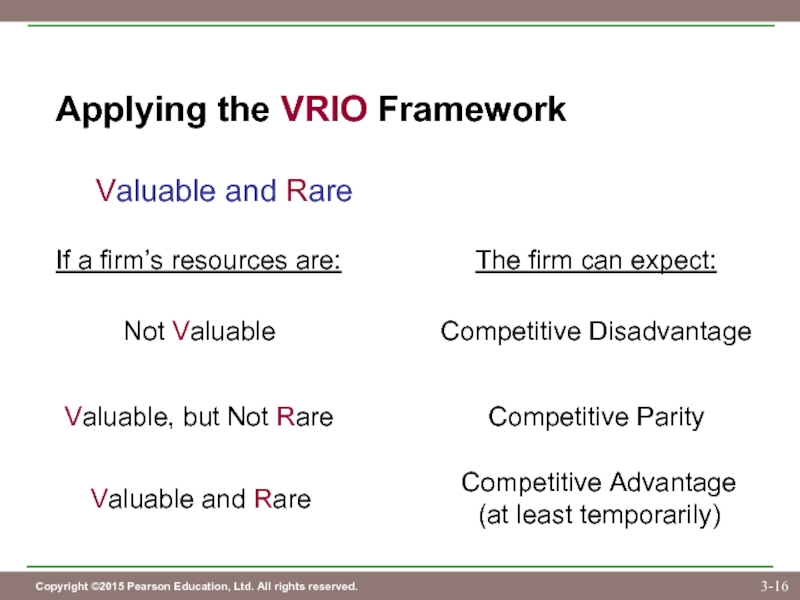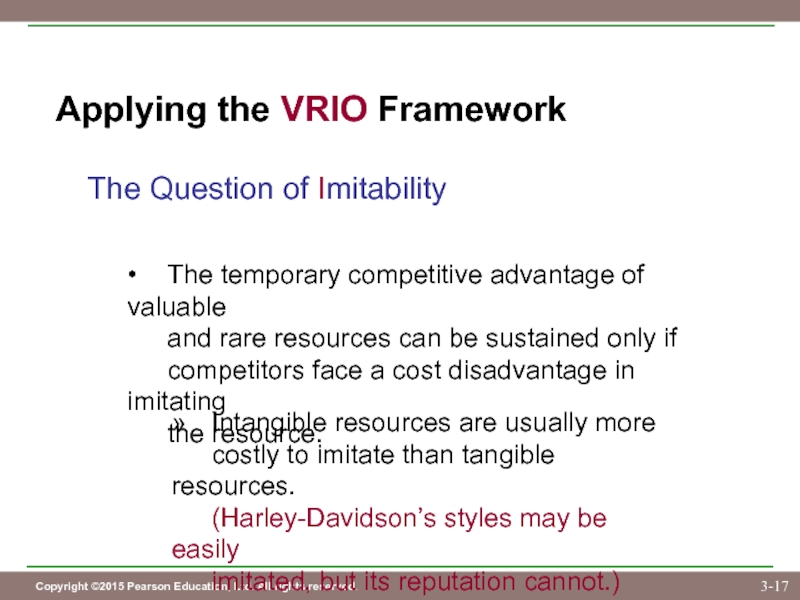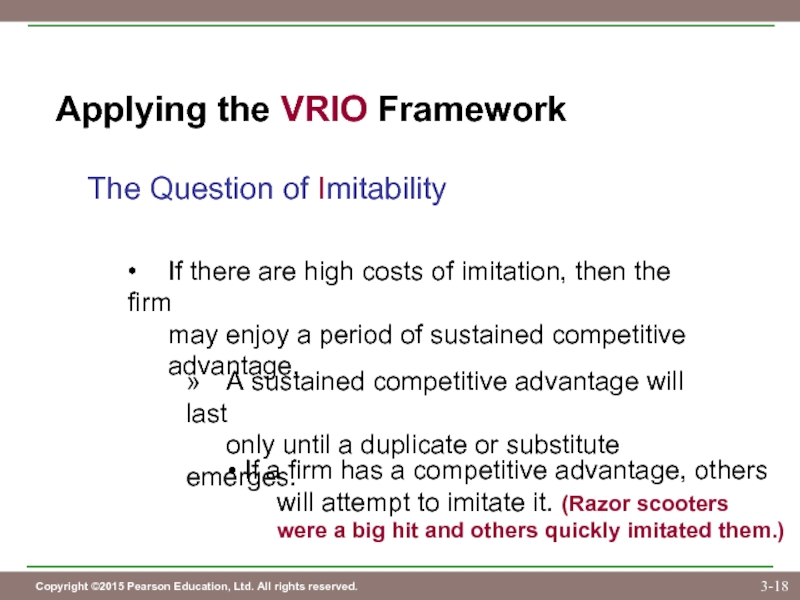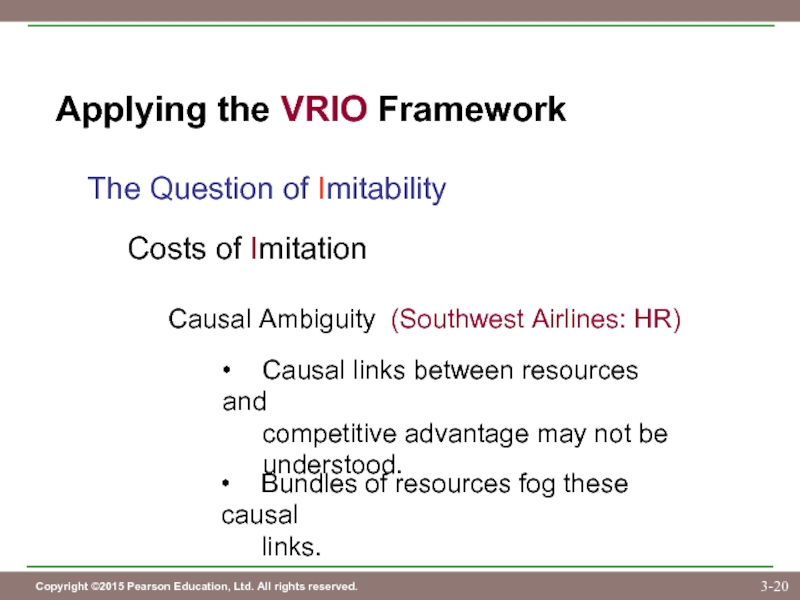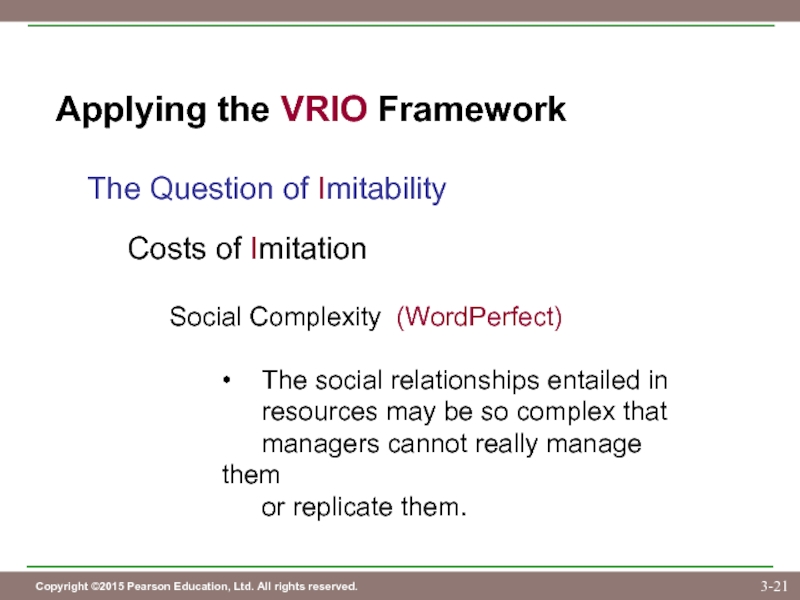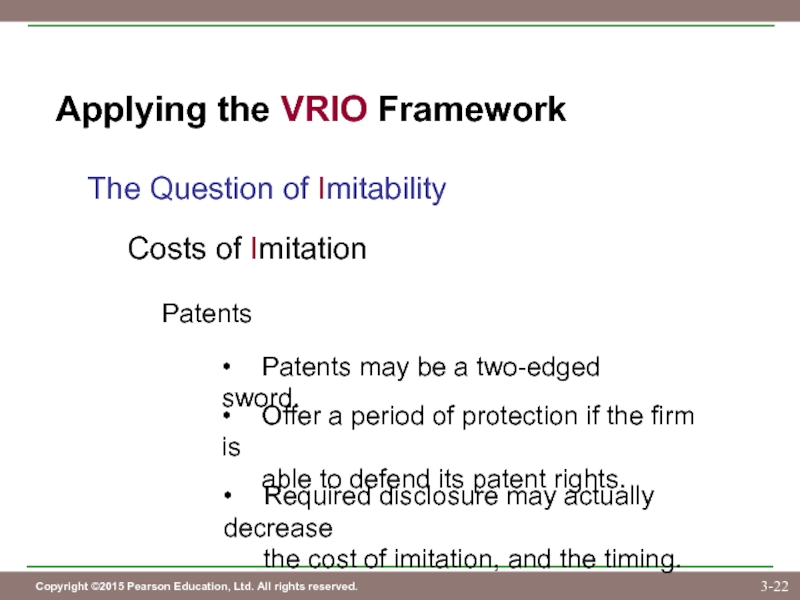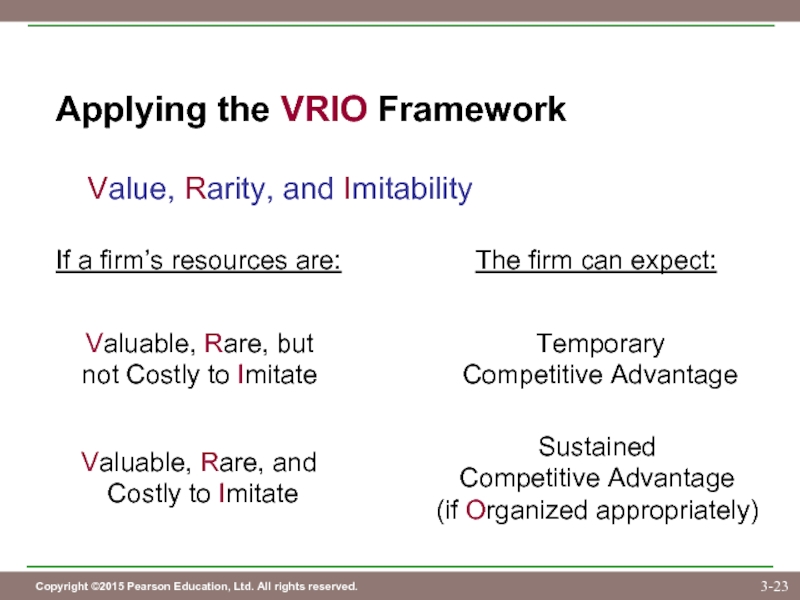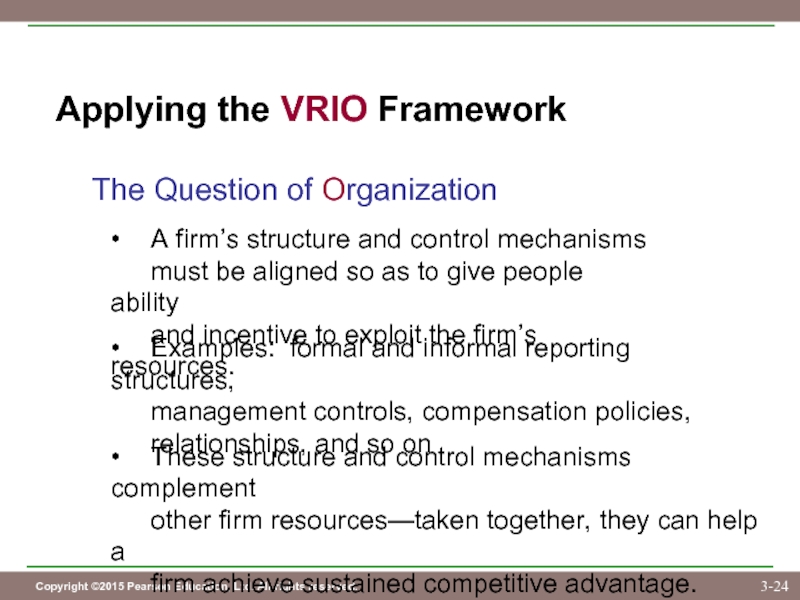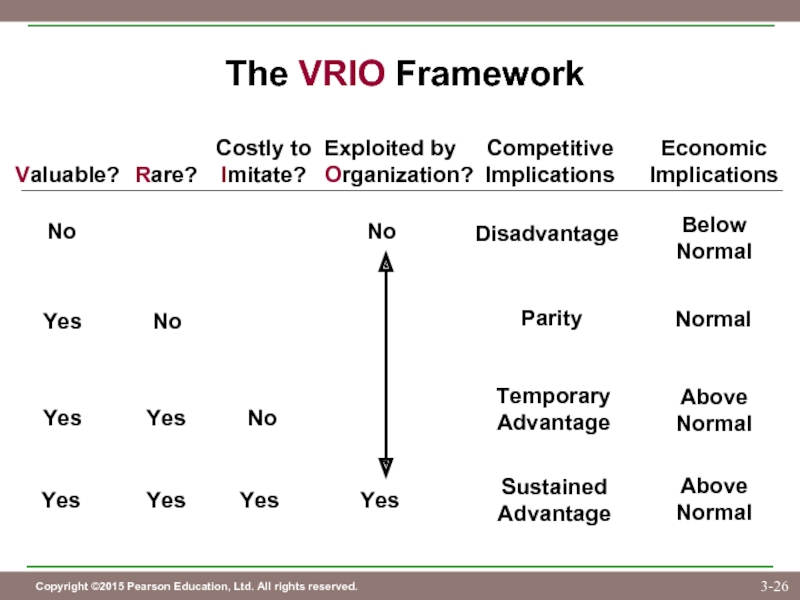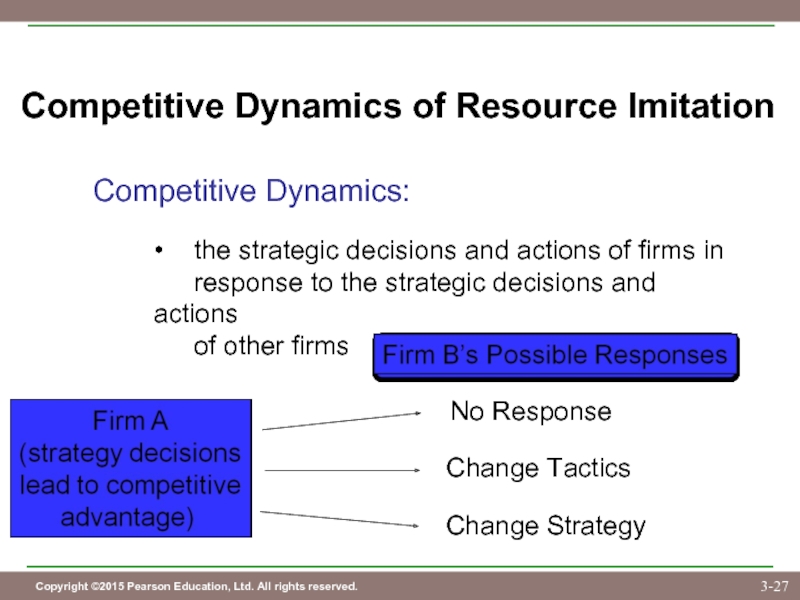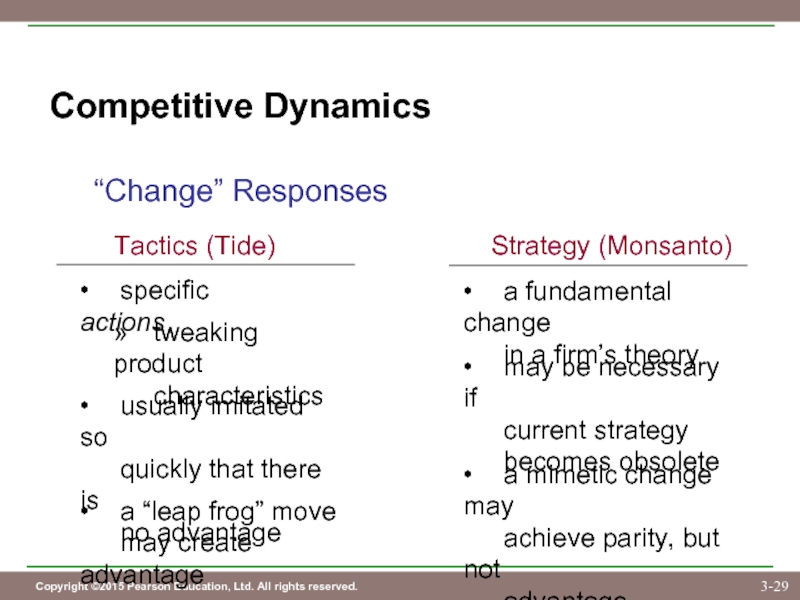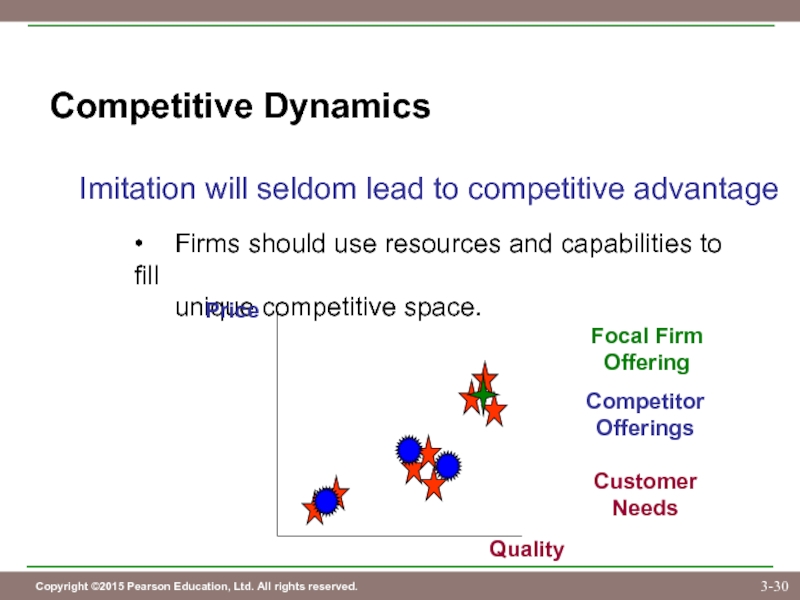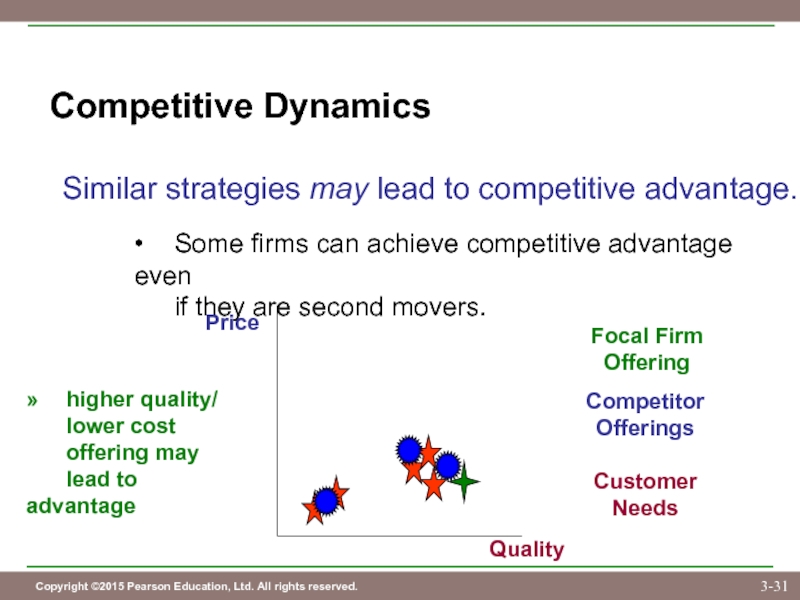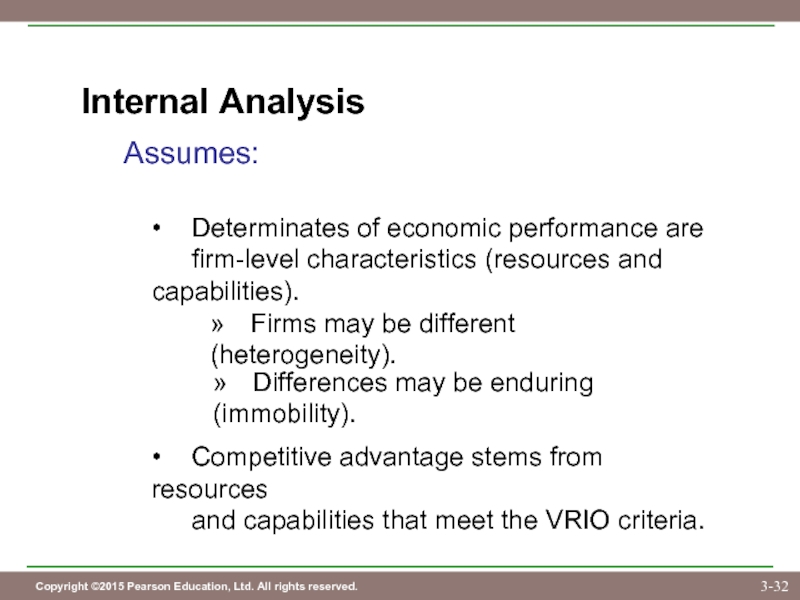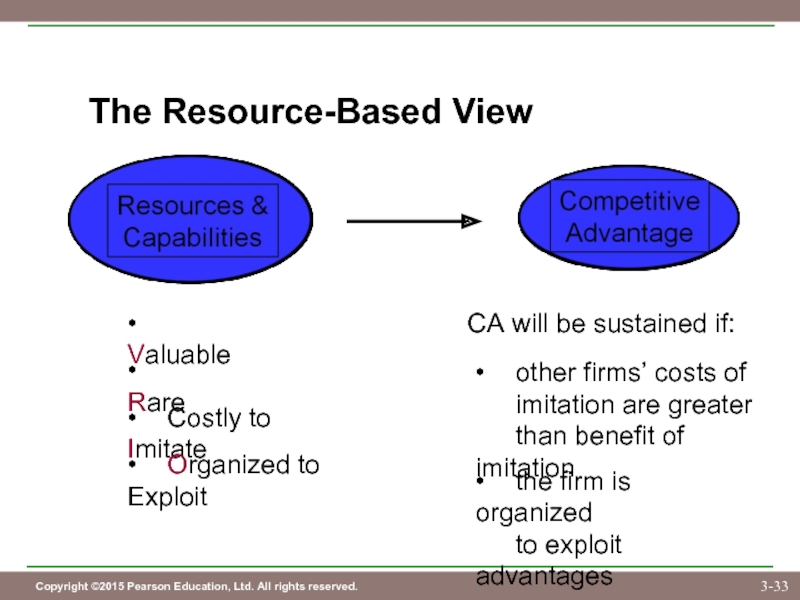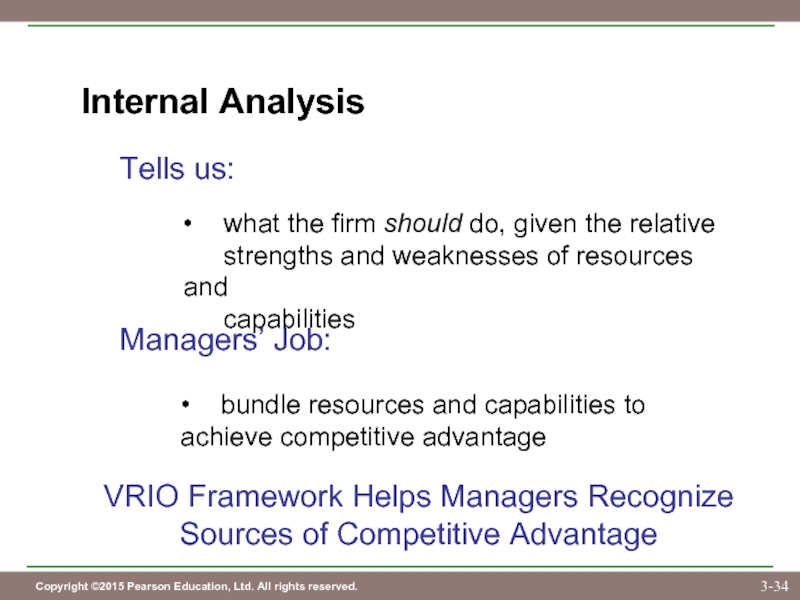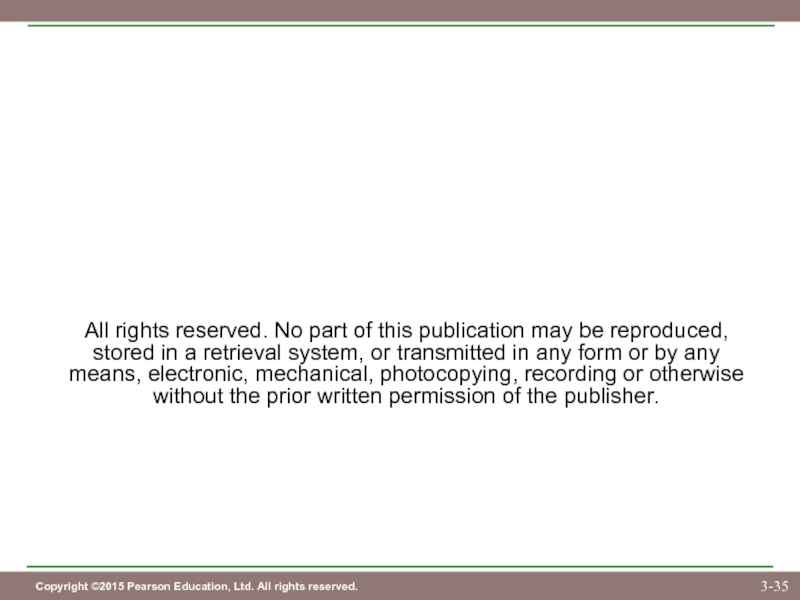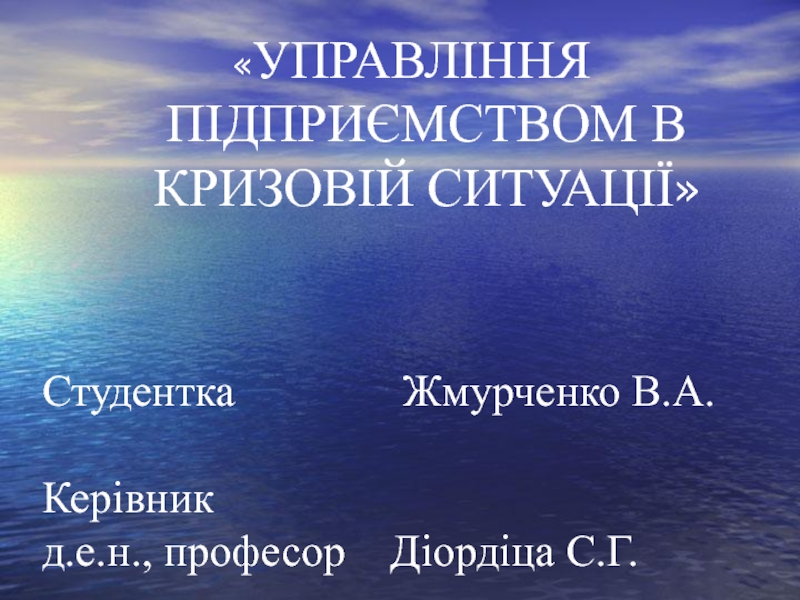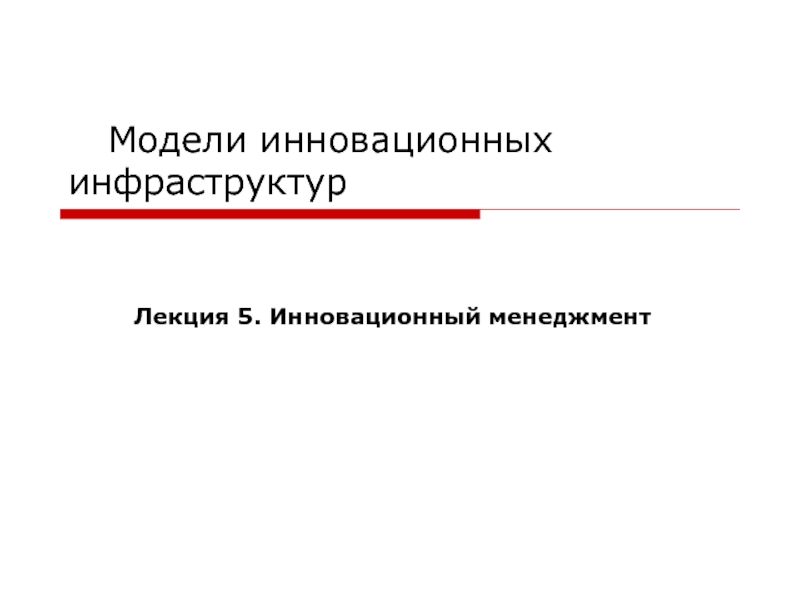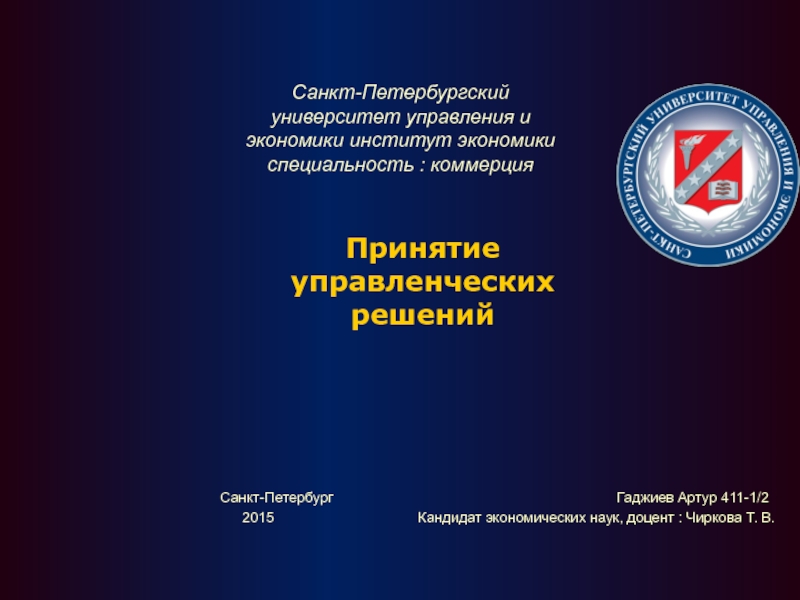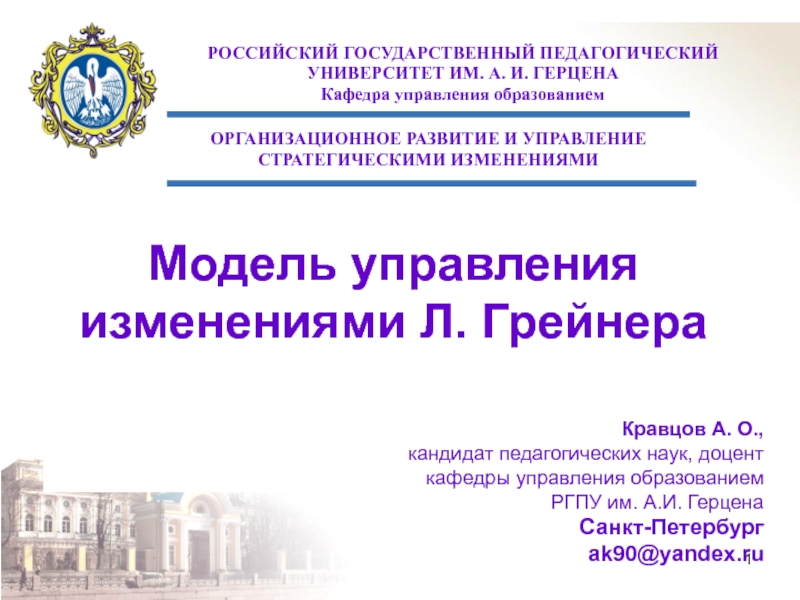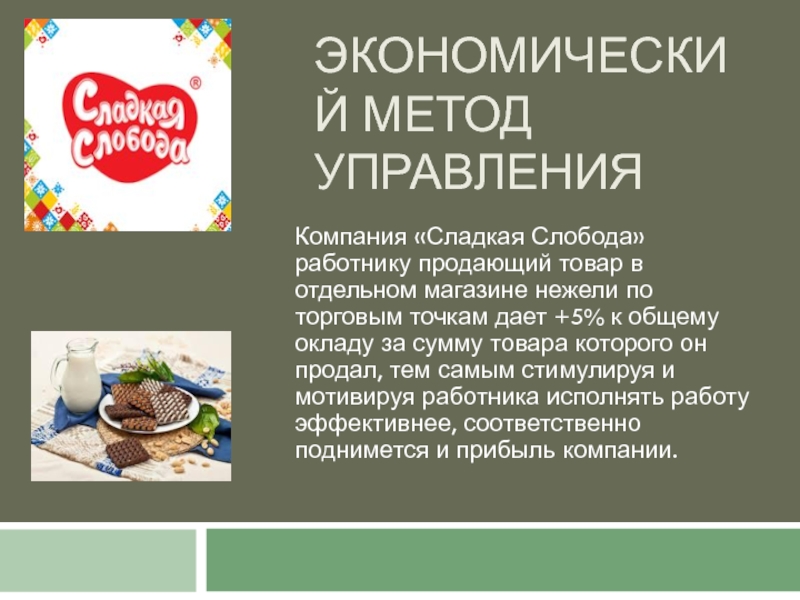- Главная
- Разное
- Дизайн
- Бизнес и предпринимательство
- Аналитика
- Образование
- Развлечения
- Красота и здоровье
- Финансы
- Государство
- Путешествия
- Спорт
- Недвижимость
- Армия
- Графика
- Культурология
- Еда и кулинария
- Лингвистика
- Английский язык
- Астрономия
- Алгебра
- Биология
- География
- Детские презентации
- Информатика
- История
- Литература
- Маркетинг
- Математика
- Медицина
- Менеджмент
- Музыка
- МХК
- Немецкий язык
- ОБЖ
- Обществознание
- Окружающий мир
- Педагогика
- Русский язык
- Технология
- Физика
- Философия
- Химия
- Шаблоны, картинки для презентаций
- Экология
- Экономика
- Юриспруденция
Chapter 3. Evaluating a Firm’s Internal Capabilities презентация
Содержание
- 1. Chapter 3. Evaluating a Firm’s Internal Capabilities
- 2. What Does Internal Analysis Tell Us? Internal
- 3. Why Does Internal Analysis Matter? • establish strategies
- 4. The Theory Behind Internal Analysis The Resource-Based
- 5. The Resource-Based View Resources and Capabilities Resources:
- 6. The Resource-Based View Resources and Capabilities Firm
- 7. The Resource-Based View Four Categories of Resources
- 8. The Resource-Based View Two Critical Assumptions of
- 9. The Resource-Based View What do these assumptions
- 10. The Resource-Based View • Heterogeneity of resources typically
- 11. The Internal Analysis Tool The VRIO Framework Four Important Questions: • Value • Rarity • Imitability • Organization
- 12. The VRIO Framework If a firm has
- 13. The VRIO Framework • A resource or bundle
- 14. Applying the VRIO Framework The Question of
- 15. Applying the VRIO Framework The Question of
- 16. Applying the VRIO Framework Valuable and Rare
- 17. Applying the VRIO Framework The Question of
- 18. Applying the VRIO Framework The Question of
- 19. Applying the VRIO Framework The Question of
- 20. Applying the VRIO Framework The Question of
- 21. Applying the VRIO Framework The Question of
- 22. Applying the VRIO Framework The Question of
- 23. Applying the VRIO Framework Value, Rarity, and
- 24. Applying the VRIO Framework The Question of
- 25. The VRIO Framework Valuable? Rare? Costly to
- 26. The VRIO Framework Valuable? Rare? Costly to
- 27. Competitive Dynamics of Resource Imitation Competitive Dynamics:
- 28. Competitive Dynamics • the other firm is serving
- 29. Competitive Dynamics “Change” Responses Tactics (Tide) Strategy
- 30. Competitive Dynamics Imitation will seldom lead to
- 31. Competitive Dynamics Similar strategies may lead to
- 32. Internal Analysis Assumes: • Determinates of economic performance
- 33. The Resource-Based View • Valuable • Rare • Costly
- 34. Managers’ Job: • bundle resources and capabilities to
- 35. All rights reserved. No part of this
Слайд 2What Does Internal Analysis Tell Us?
Internal analysis provides a comparative look
a firm’s capabilities.
• What are the firm’s strengths?
• What are the firm’s weaknesses?
• How do these strengths and weaknesses compare
to competitors?
Слайд 3Why Does Internal Analysis Matter?
• establish strategies that will exploit any sources
of
• determine if its resources and capabilities are
likely sources of competitive advantage
Internal analysis helps a firm:
Слайд 4The Theory Behind Internal Analysis
The Resource-Based View
• developed to answer the question:
firms achieve better economic performance
than others?
• assumes that a firm’s resources and capabilities
are the primary drivers of competitive advantage
and economic performance
• used to help firms achieve competitive advantage
and superior economic performance
Слайд 5The Resource-Based View
Resources and Capabilities
Resources:
• tangible and intangible assets of a firm
»
• used to conceive of and implement strategies
Capabilities:
• a subset of resources that enable a firm to
take full advantage of other resources
» marketing skill, cooperative relationships
Слайд 6The Resource-Based View
Resources and Capabilities
Firm Assets:
Machinery
Collective Product Design Skill
Recruiting Skill
Engineering Skill
Mineral Deposits
Are these resources
or capabilities?
?
?
?
?
?
Слайд 7The Resource-Based View
Four Categories of Resources
• Financial (cash, retained earnings)
• Physical (plant and
• Human (skills and abilities of individuals)
• Organizational (reporting structures, relationships)
Слайд 8The Resource-Based View
Two Critical Assumptions of the RBV
• Resource Heterogeneity
» Different firms may
• Resource Immobility
» It may be costly for firms without certain
resources to acquire or develop them.
» Some resources may not spread from firm to
firm easily.
Слайд 9The Resource-Based View
What do these assumptions really mean?
• if one firm has
and other firms don’t, and…
• if other firms can’t imitate these resources
without incurring high costs, then…
• the firm possessing the valuable resources
will likely gain a sustained competitive advantage
Слайд 10The Resource-Based View
• Heterogeneity of resources typically occurs as the
result of
of a firm.
Resource Heterogeneity
• Managers of a firm could take resources that seem
homogeneous and “bundle” them to create
heterogeneous combinations.
• Competitive advantage typically stems from several
resources and capabilities “bundled” together.
Слайд 11The Internal Analysis Tool
The VRIO Framework
Four Important Questions:
• Value
• Rarity
• Imitability
• Organization
Слайд 12The VRIO Framework
If a firm has resources that are:
• valuable,
• rare, and
• costly to
• the firm is organized to exploit these resources,
then the firm can expect to enjoy a sustained
competitive advantage.
Слайд 13The VRIO Framework
• A resource or bundle of resources is subjected to
each
implication of the resource.
Applying the Tool
• Each question is considered in a comparative
sense (competitive environment).
Слайд 14Applying the VRIO Framework
The Question of Value
• In theory: Does the resource
to exploit an external opportunity or neutralize
an external threat?
• The practical: Does the resource result in an
increase in revenues, a decrease in costs, or
some combination of the two? (Levi’s reputation
allows it to charge a premium for its Docker’s pants)
Слайд 15Applying the VRIO Framework
The Question of Rarity
• A resource must be rare
competition has not set in.
• If a resource is not rare, then perfect competition
dynamics are likely to be observed (i.e., no
competitive advantage, no above normal profits).
• Thus, there may be other firms that possess the
resource, but still few enough that there is scarcity
(several pharmaceuticals sell cholesterol-lowering
drugs, but the drugs are still scarce—look at prices).
Слайд 16Applying the VRIO Framework
Valuable and Rare
If a firm’s resources are:
The firm
Not Valuable
Competitive Disadvantage
Valuable, but Not Rare
Competitive Parity
Valuable and Rare
Competitive Advantage
(at least temporarily)
Слайд 17Applying the VRIO Framework
The Question of Imitability
• The temporary competitive advantage of
and rare resources can be sustained only if
competitors face a cost disadvantage in imitating
the resource.
» Intangible resources are usually more
costly to imitate than tangible resources.
(Harley-Davidson’s styles may be easily
imitated, but its reputation cannot.)
Слайд 18Applying the VRIO Framework
The Question of Imitability
• If there are high costs
may enjoy a period of sustained competitive
advantage.
» A sustained competitive advantage will last
only until a duplicate or substitute emerges.
If a firm has a competitive advantage, others
will attempt to imitate it. (Razor scooters
were a big hit and others quickly imitated them.)
Слайд 19Applying the VRIO Framework
The Question of Imitability
Costs of Imitation
Unique Historical Conditions
• first mover advantages
• path dependence
Слайд 20Applying the VRIO Framework
The Question of Imitability
Costs of Imitation
Causal Ambiguity (Southwest
• Causal links between resources and
competitive advantage may not be
understood.
• Bundles of resources fog these causal
links.
Слайд 21Applying the VRIO Framework
The Question of Imitability
Costs of Imitation
Social Complexity (WordPerfect)
• The
resources may be so complex that
managers cannot really manage them
or replicate them.
Слайд 22Applying the VRIO Framework
The Question of Imitability
Costs of Imitation
Patents
• Patents may be
• Offer a period of protection if the firm is
able to defend its patent rights.
• Required disclosure may actually decrease
the cost of imitation, and the timing.
Слайд 23Applying the VRIO Framework
Value, Rarity, and Imitability
If a firm’s resources are:
The
Valuable, Rare, but
not Costly to Imitate
Temporary
Competitive Advantage
Valuable, Rare, and
Costly to Imitate
Sustained
Competitive Advantage
(if Organized appropriately)
Слайд 24Applying the VRIO Framework
The Question of Organization
• A firm’s structure and control
must be aligned so as to give people ability
and incentive to exploit the firm’s resources.
• Examples: formal and informal reporting structures,
management controls, compensation policies,
relationships, and so on
• These structure and control mechanisms complement
other firm resources—taken together, they can help a
firm achieve sustained competitive advantage.
(3M Company)
Слайд 25The VRIO Framework
Valuable?
Rare?
Costly to
Imitate?
Exploited by
Organization?
Competitive
Implications
No
Yes
Yes
Yes
Yes
Yes
Yes
Yes
No
No
No
Disadvantage
Parity
Temporary
Advantage
Sustained
Advantage
Слайд 26The VRIO Framework
Valuable?
Rare?
Costly to
Imitate?
Exploited by
Organization?
Competitive
Implications
No
Yes
Yes
Yes
Yes
Yes
Yes
Yes
No
No
No
Disadvantage
Parity
Temporary
Advantage
Sustained
Advantage
Economic
Implications
Below
Normal
Normal
Above
Normal
Above
Normal
Слайд 27Competitive Dynamics of Resource Imitation
Competitive Dynamics:
• the strategic decisions and actions of
response to the strategic decisions and actions
of other firms
No Response
Change Tactics
Change Strategy
Слайд 28Competitive Dynamics
• the other firm is serving a different market
A firm may
• a response may hurt its own competitive
advantage
• it does not have the resources and capabilities
to mount an effective response
• it wants to reduce or manage rivalry in the
market through tacit collusion
Слайд 29Competitive Dynamics
“Change” Responses
Tactics (Tide)
Strategy (Monsanto)
• specific actions
» tweaking product
characteristics
• usually imitated so
quickly that there
no advantage
• a “leap frog” move
may create advantage
• a fundamental change
in a firm’s theory
• may be necessary if
current strategy
becomes obsolete
• a mimetic change may
achieve parity, but not
advantage
Слайд 30Competitive Dynamics
Imitation will seldom lead to competitive advantage
• Firms should use resources
unique competitive space.
Customer
Needs
Competitor
Offerings
Price
Quality
Focal Firm
Offering
Слайд 31Competitive Dynamics
Similar strategies may lead to competitive advantage.
• Some firms can achieve
if they are second movers.
Customer
Needs
Competitor
Offerings
Price
Quality
Focal Firm
Offering
» higher quality/
lower cost
offering may
lead to advantage
Слайд 32Internal Analysis
Assumes:
• Determinates of economic performance are
firm-level characteristics (resources and capabilities).
» Firms may
» Differences may be enduring (immobility).
• Competitive advantage stems from resources
and capabilities that meet the VRIO criteria.
Слайд 33The Resource-Based View
• Valuable
• Rare
• Costly to Imitate
• Organized to Exploit
CA will be sustained if:
• other
imitation are greater
than benefit of imitation
• the firm is organized
to exploit advantages
Слайд 34Managers’ Job:
• bundle resources and capabilities to achieve competitive advantage
Internal Analysis
Tells us:
• what
strengths and weaknesses of resources and
capabilities
VRIO Framework Helps Managers Recognize
Sources of Competitive Advantage
